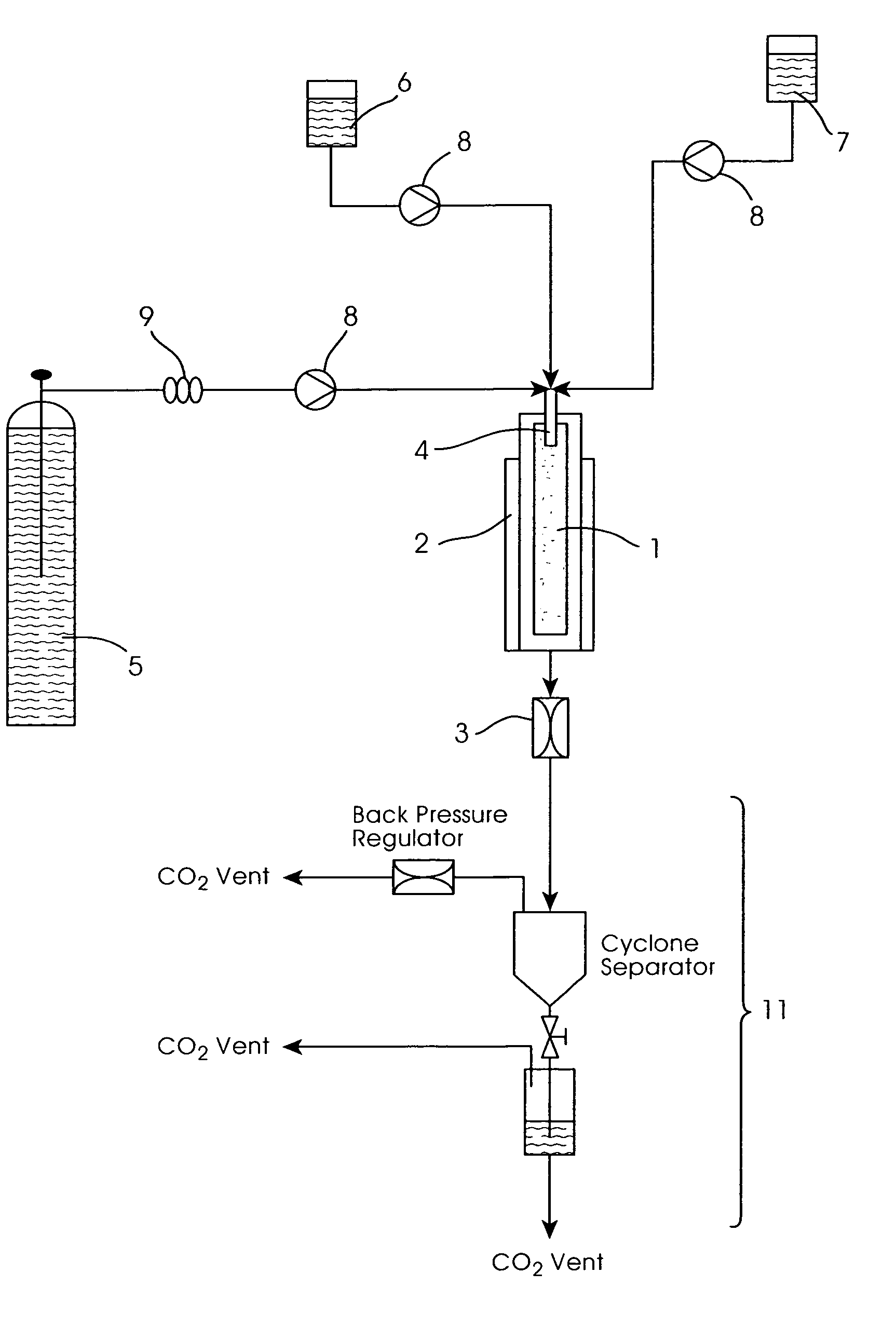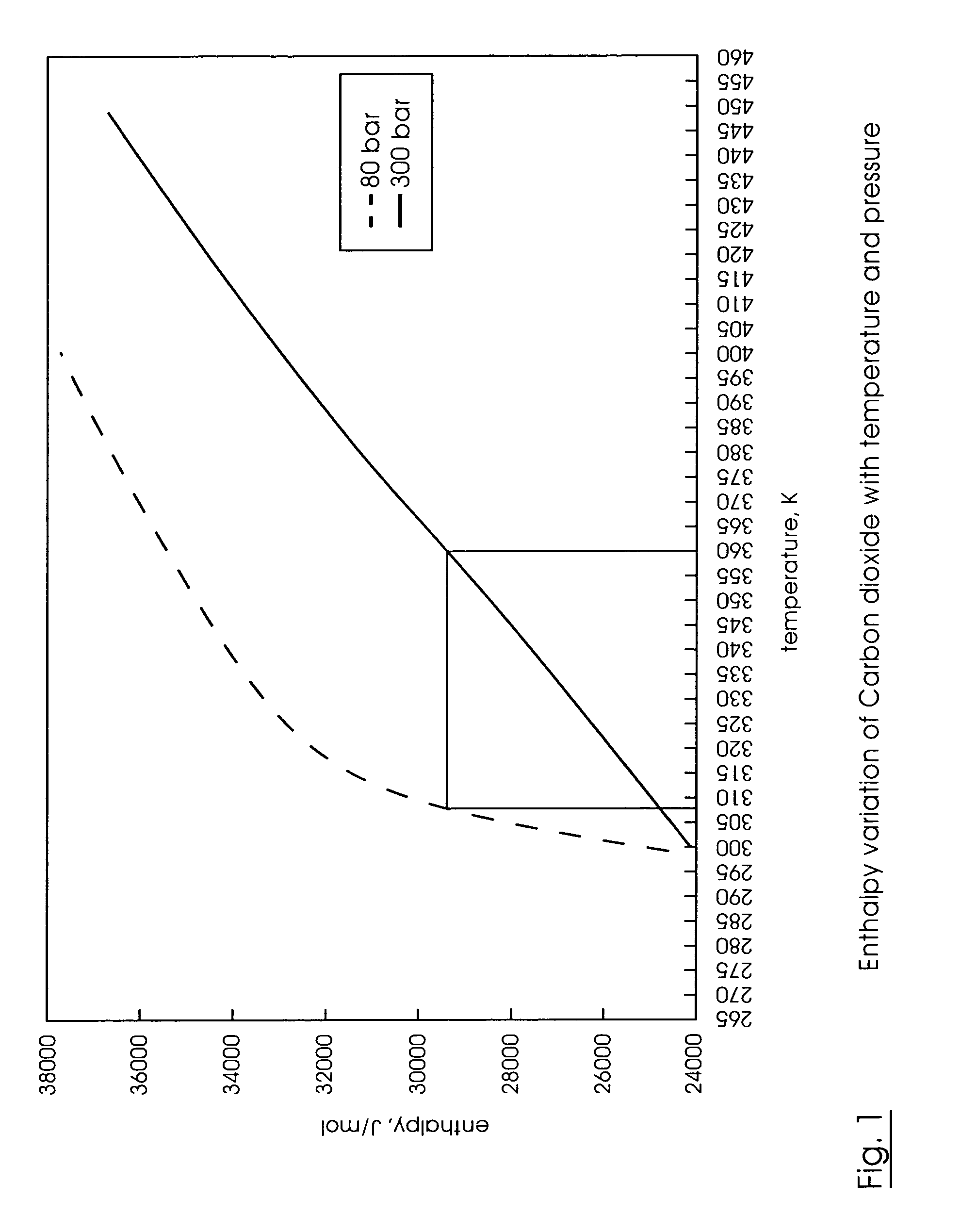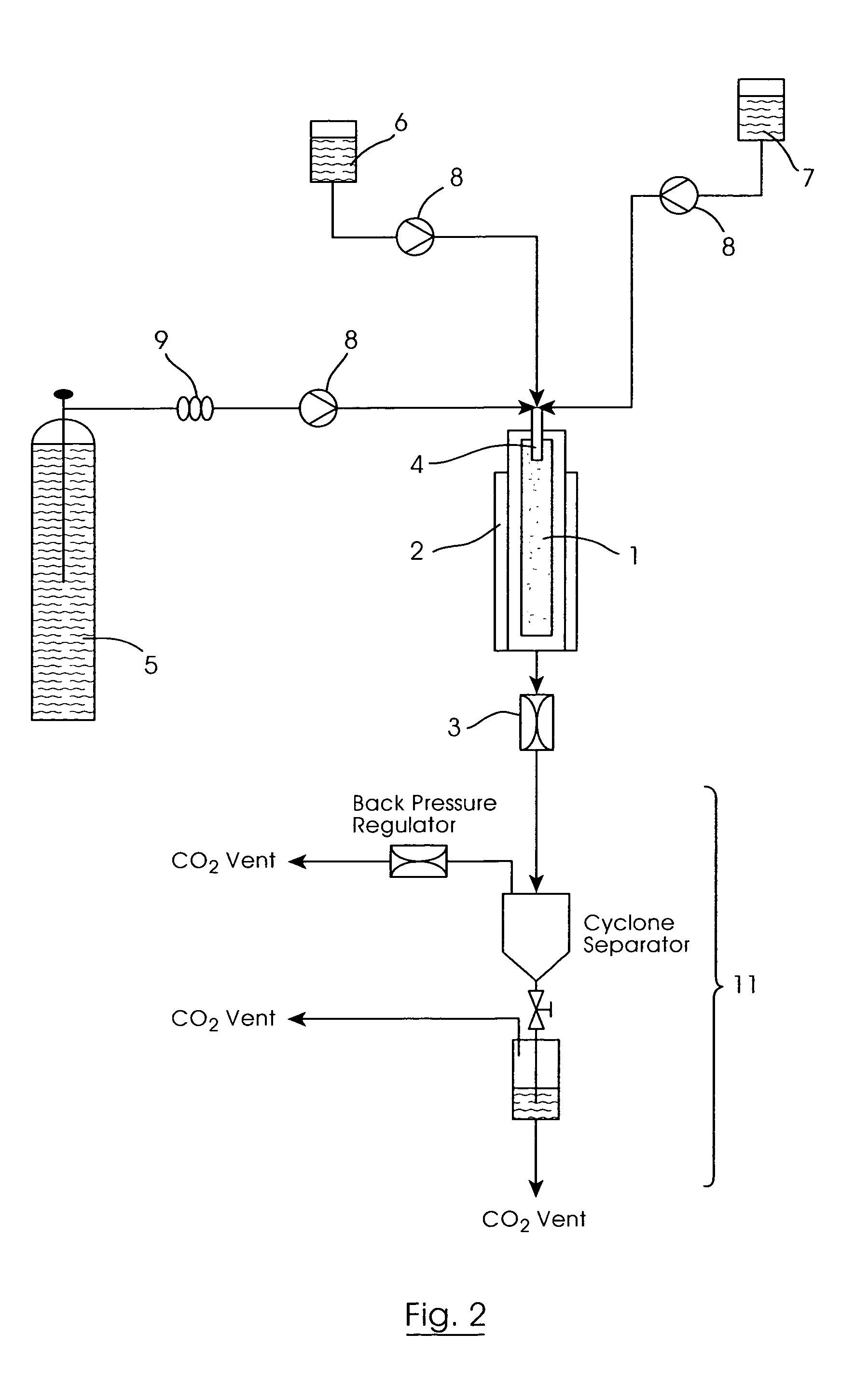Particle formation
a particle and particle technology, applied in the field of particle formation, can solve the problems that authors have not appeared to have achieved such high velocities, and achieve the effect of reducing the risk of apparatus blockage, or substantially eliminating or at least reducing the risk of blockag
- Summary
- Abstract
- Description
- Claims
- Application Information
AI Technical Summary
Benefits of technology
Problems solved by technology
Method used
Image
Examples
examples
[0108]Apparatus as shown in FIG. 2, incorporating a fluid inlet assembly as shown in FIGS. 3 to 5, was used to carry out particle formation methods in accordance with the invention. The nozzle 21 comprised a fluid inlet tube of internal diameter 1.6 mm and an outlet of diameter 0.2 mm. The internal bore at the end of the inlet tube 23 was 0.125 mm. The vertical separation “d” between the nozzle and tube outlets was varied between 0 and 8 mm, “0” representing the situation where the solution tube 23 contacted the lower end of the nozzle 21.
[0109]Supercritical carbon dioxide was used as the anti-solvent. It was pumped at a flow rate (of liquid CO2, prior to passing through a heater) of 200 g / min. Its temperature on entry into the nozzle 21 was 356 K (83° C.).
[0110]The pressure in the particle formation vessel 1 (capacity 2 liters) was maintained at 80 bar and 309–313 K (36–40° C.). The CO2 back pressure was between 250 and 300 bar. These conditions created a sonic or supersonic CO2 ve...
examples a
[0111]Various target compounds were dissolved in appropriate solvents and introduced into the apparatus via tube 23. The distance “d” between the outlets of the anti-solvent nozzle and the solution inlet tube was kept constant at 4 mm. Particle formation was allowed to occur by the action of the CO2 anti-solvent, and the products collected in the vessel 1. The products were assessed by scanning electron microscopy (SEM) and in most cases their particle sizes analysed using an Aerosizer™ and / or Sympatec™ system.
[0112]The results of these experiments are shown in Table 1 below.
[0113]
TABLE 1TargetTargetsolutionsolutionProduct sizeProduct sizeExptconcentrationflow rate(Aerosizer ™)(Sympatec ™)no.Target solution(% w / v)(ml / min)(μm)(μm)A1Compound I in342.84—methanolA2Compound II in1.754—5.75methanolA3Compound III in30.51.397.99DMFA4Compound IV in0.854——DMFA5Compound V in31—4.6 DMSOA6Compound VI in510.972.5 THF
[0114]SEM photographs of the products of Experiments A1, A2, A5 and A6 are shown ...
examples b
[0115]In these experiments, the distance “d” between the outlets of the anti-solvent nozzle 21 and the solution inlet tube 23 was varied between 0 and 8 mm. In practice, the “0” separation represented the thickness of the inlet tube wall—in other words, as close to zero as was possible without cutting into the nozzle wall. The target solution was 3% w / v compound I in methanol; its flow rate into the particle formation vessel 1 was 4 ml / min.
[0116]The results are shown in Table 2 below.
[0117]
TABLE 2DistanceProduct sizeExpt“d”(Aerosizer ™)no.(mm)(μm)B103.21B242.84B383.63
[0118]The particle size distributions (by Aerosizer™) for the products of Examples B1, B2 and B3 are shown in FIGS. 10A and 10B, 11A and 11B, and 12A and 12B respectively.
PUM
| Property | Measurement | Unit |
|---|---|---|
| pressure | aaaaa | aaaaa |
| temperature | aaaaa | aaaaa |
| critical temperature Tc | aaaaa | aaaaa |
Abstract
Description
Claims
Application Information
 Login to View More
Login to View More - R&D
- Intellectual Property
- Life Sciences
- Materials
- Tech Scout
- Unparalleled Data Quality
- Higher Quality Content
- 60% Fewer Hallucinations
Browse by: Latest US Patents, China's latest patents, Technical Efficacy Thesaurus, Application Domain, Technology Topic, Popular Technical Reports.
© 2025 PatSnap. All rights reserved.Legal|Privacy policy|Modern Slavery Act Transparency Statement|Sitemap|About US| Contact US: help@patsnap.com



